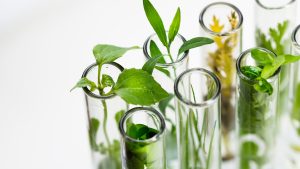Nature is essential to life in more ways than we know. As regards the discovery of new medicines, or the rediscovery of some that have been used for a long time, biodiversity never ceases to give us the best it has to offer. The loss of biodiversity should cause, among others, this major impact: loss of essential raw materials for the health and well-being of societies.
We will never know the exact moment when our ancestors realised that, in addition to feeding us fruits could have other beneficial effects on the human body, or that placing crushed herbs, leaves and flowers on some parts of the body could improve assorted ailments. In traditional Chinese medicine, the benefits of herbs have been known for thousands of years; a little later, in 1550 BC, the Egyptians listed 877 herbal medicines in the first known medical treatise.
After , other pharma products began to emerge in modern history and based also by the daily uses of plants in society, focusing on the study of their compounds and thus changing the way we look at nature forever. And so, with the emergence of synthesised medicines, in the twentieth century, traditionally used plants were replaced by drugs.
The first of these drugs were morphine and aspirin. Inspired by the effects of opium, extracted from the poppy (Papaver somniferum), the German pharmacist Friedrich Wilhelm Sertürner (1783 – 1841) managed to isolate a crystalline substance – the principium somniferum, or morphine, thus nicknamed by the creator as a tribute to the Greek god of dreams, Morpheus. It was 1803 and only in 1826 it began to be sold by Merck. The first semi-synthetic compound to be sold was salicin, isolated from willow (Salix alba) leading to acetylsalicylic acid and aspirin, placed on the market in 1899 by Bayer.
Proof of the importance of biodiversity in treatments of yesteryear and medicines developed today, the branch of ethnopharmacology focuses on the study and systematisation of products of natural origin that have been used as medicines by peoples, gathering knowledge from areas such as botany, pharmacognosy, pharmacology and sociology. A 2001 study states that, in 122 plant-derived compounds, 80% were linked to their ethnopharmacological origins, among them important anticancer drugs such as paclitaxel or camptothecin. In total and between 1981 and 2006, 155 anticancer drugs were authorised, almost half of these drugs originating from plants.
Does this mean that taking a closer look at the ingredients societies have used for centuries, is a good starting point for the discovery of new and revolutionary medicines? Studies that revisit some of the species previously analysed indicate that it is very likely.
Meanwhile, new herbal medicines – a distinct class, which refers to medicine that exclusively includes herbal active substances – continue to be created and, to be marketed, follow their own procedures until they are allowed to be placed on the market.
And drugs whose compounds originate in biodiversity must also go through several stages to reach the market. After being first isolated or synthesised, drugs must be tested to prove their safety and efficacy through several studies, including pharmacological studies focused on the effects of chemicals on the human body. At the end of this procedure is regulatory approval by national or international entities.






